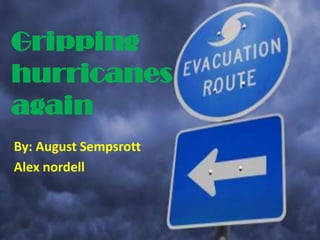
NASA scientists track hurricanes to understand intensification
- 2. hurricaneshurricaneshurricaneshurricaneshurricaneshurricaneshurricaneshurricaneshurricaneshurricaneshu rricaneshurricaneshurricaneshurricaneshurricaneshurricaneshurricaneshurricaneshurricaneshurricaneshurri By: Natasha Vizcarra caneshurricaneshurricaneshurricaneshurricaneshurricaneshurricaneshurricaneshurricaneshurricaneshurrica neshurricaneshurricaneshurricaneshurricaneshurricaneshurricaneshurricaneshurricaneshurricaneshurricane shurricaneshurricaneshurricaneshurricaneshurricaneshurricaneshurricaneshurricaneshurricaneshurricanesh urricaneshurricaneshurricaneshurricaneshurricaneshurricaneshurricaneshurricaneshurricaneshurricaneshurr icaneshurricaneshurricaneshurricaneshurricaneshurricaneshurricaneshurricaneshurricaneshurricaneshurrica neshurricaneshurricaneshurricaneshurricaneshurricaneshurricaneshurricaneshurricaneshurricaneshurricane shurricaneshurricaneshurricaneshurricaneshurricaneshurricaneshurricaneshurricaneshurricaneshurricanesh urricaneshurricaneshurricaneshurricaneshurricaneshurricaneshurricaneshurricaneshurricaneshurricaneshurr
- 3. Satellites •Laden Airplane •4 NASA satellites •NASA Terra •NASA Aqua •Cloud Sat •TRMM
- 4. “GRIP’s mission is to Why did they do this? understand the physical processes happening in a hurricane, but we will also take that information to improve forecasts,” said Michael Goodman, an atmospheric scientist at NASA Marshall Space Flight Center.
- 5. Their Findings “By having multiple aircraft with the Nine months after the field right array of sensors, we measured mission and in the midst of several different aspects of the processing the large amount of storm simultaneously,” Braun said. “We measured characteristics of the data they collected, the large-scale environment better, but scientists are seeing glimmers we also measured the evolution of of surprising observations that these smaller cloud systems, how challenge what they thought they evolved into bigger cloud they already knew about systems, and hopefully how they hurricanes. Although still raw were interacting with the environment.” In addition to three and very preliminary, the data aircraft loaded with updated and are prompting the GRIP new instruments, the NASA scientists to ask new questions. Terra, Aqua, Cloud Sat, and Tropical “You don’t often go into the Rainfall Measuring Mission (TRMM) field and come off the airplane satellites captured the hurricanes’ and have ‘Eureka!’ clouds and rainfall, as well as environmental conditions from space.
- 6. Three hundred scientists, engineers, pilots, and crew who have been pursuing hurricanes to gather more observations through the NASA Genesis and Rapid Intensification Processes (GRIP) experiment. The scientists tracked and studied several storms in August and September of 2010, as they formed over the Atlantic Ocean and either petered out or grew into much larger hurricanes. They took measurements in, outside, and around the storms using sensor-laden airplanes and four NASA satellites watching from space.
- 10. Image J Analysis Severe storms El Niño/La Niña The series of images shown This series of images shows depicts the strongest the dance between ocean hurricane, cyclone, or and atmosphere. Changes in typhoon during each rainfall, right, echo changes year, regardless of ocean in sea surface basin. It includes storms both temperature, left. Many infamous and obscure. The people recognize the judging is based on the extreme ends of the storm with the highest wind spectrum, El Niño and La speed, using lowest Niña, by the severe droughts minimum pressure as a tie- and intense rains each brings breaker when needed. to different parts of the world.
- 11. What happened ? In September 2010, more than a hundred scientists watched and waited as a tropical depression hovering over the Caribbean Sea swirled and formed into Tropical Storm Karl. Two days later, as the storm quickly intensified into a Category 3 hurricane near Mexico, the scientists pounced. Three aircraft with their payloads of sensors flew right into Karl to profile the storm’s innards violently rotating wind and clouds, and torrential rains that fell on the southern bend of the Gulf of Mexico.
- 12. Today's lesson: Hurricanes! With hurricanes it turns out, forecasting a storm’s intensity is a trickier problem to solve. A storm’s track is an easier problem to figure out, Storms are steered around by the surrounding winds, which in turn are governed by the pattern of trade winds that push the ocean around in the tropics. Large-scale processes like the trade winds evolve more slowly which makes them, in some ways, more predictable. To the extent that we are able to observe the large scale winds, scientists can forecast track pretty readily.
- 13. How does El Nino effect hurricanes • El Nino reduces the number of hurricanes in the Atlantic Basin primarily due to increased wind shear, which tends to tear the storms apart before they can really develop. In the Pacific, there is usually more activity, but it is focused further to the east in the Western Pacific, not moving west of Korea and Japan as much.